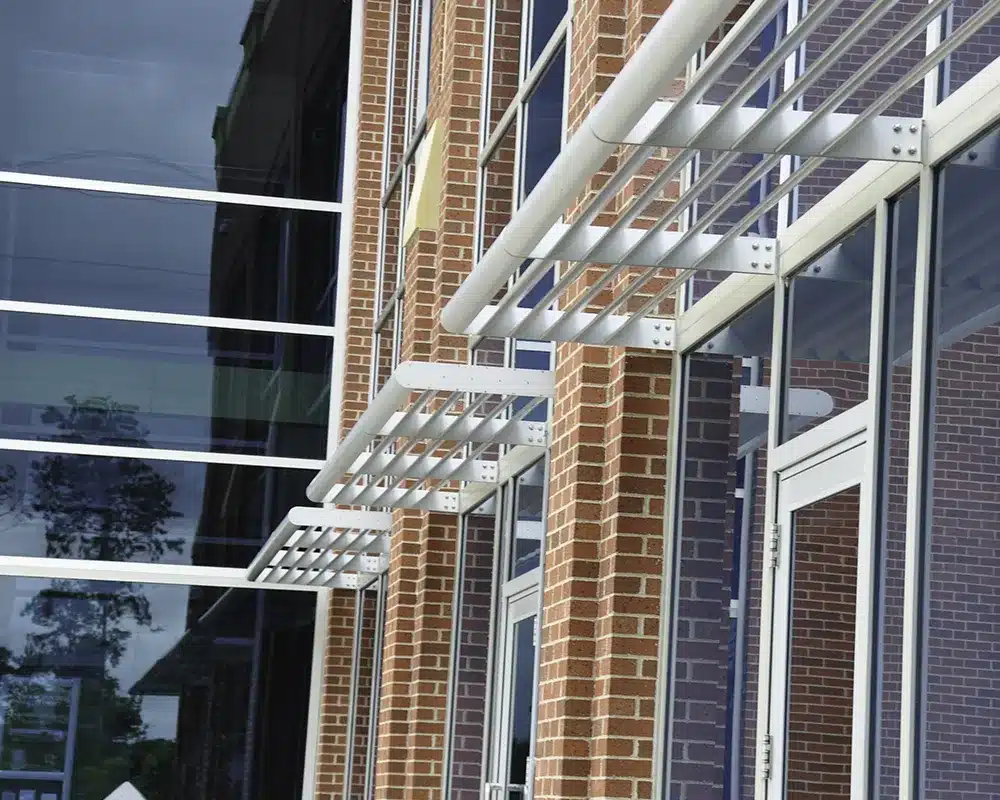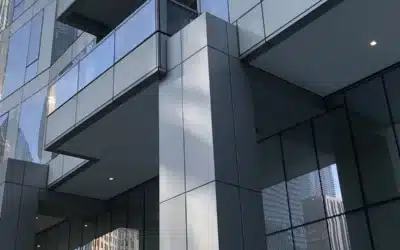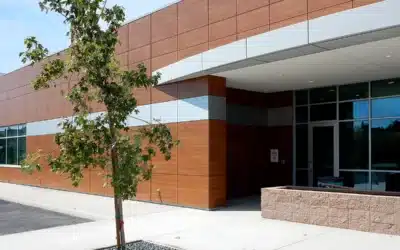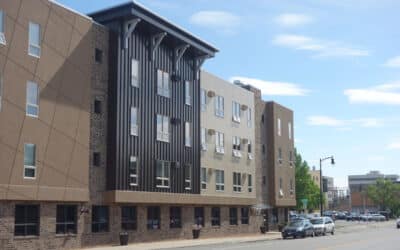
It’s no secret that choosing the right shading and sun control systems for commercial and architectural builds can make a significant difference in the building’s overall energy efficiency and aesthetic value. After all, the sun may be a beautiful source of natural light, but it can also bring unwanted heat that stresses your HVAC, glare, furnishing damage, and overall discomfort – more so for structures in high-heat locations and for structures with a lot of windows facing west.
The good news is that you can counter/limit your solar exposure with the right combination of shading and sun control systems. Overall, sun shading systems come with their unique benefits and features, and ultimately filter and manage the amount of sunlight that enters a building.
Types Of Sun Shading Systems
Vertical Sunshades
Vertical sunshades are an excellent sun-shading system that provides shade from all angles. They are especially useful in high-rise buildings where the sun changes its angle frequently due to the building’s height. Vertical sunshades come in different designs, such as slats, fins, blades, and mesh screens, to provide optimal shading based on the building’s orientation and the sun’s angle. In addition, vertical sunshades are often made of lightweight materials, such as extruded aluminum, and can be customized to fit any building’s design and aesthetic.
Horizontal Sun Shading Systems
This type of sun shading system is typically fixed and built into the architectural design of the building’s facade. Horizontal sun shading systems offer high shading and sun control, creating a shaded area around the building’s perimeter. They are also ideal for managing glare. Horizontal sun shading systems are fixed and usually require professional installation. Options include overhangs, fritted glass, and sun sails.
Americlad® Cantilevered Sunshade Systems
Cantilevered sunshade systems are one of the most traditional sunshade systems available and are commonly used in commercial and architectural builds. These sunshades extend adjacent to the building structure, effectively shading the interior of the building and assisting in countering solar heat and sun glare. The Americlad® Cantilevered sunshade systems offer a wide range of standardized options for blade, fascia, and outrigger designs, providing you with an opportunity to personalize the building’s construction effortlessly and economically. Furthermore, it can also be easily combined with vertical and horizontal sunshades, creating seamless and cohesive designs.
Dynamic Solar Shading
Dynamic solar shading is an adjustable shading system that can be operated manually or through electronically powered systems. In addition to protecting from direct sunlight and reducing heat gain, dynamic shading solutions provide improved thermal indoor climate and maintain privacy. Internal and external shutters, blinds, curtains, and adjustable awnings are all examples of dynamic shading systems. A study conducted by the Fraunhofer Institute for Building Physics found that dynamic solar shading can reduce cooling energy demand by up to 13.2 kWh/m² a year.
Fixed Solar Shading
Fixed solar shading systems, usually external, are part of the building’s architecture and design. They can also be separate structures or even trees and vegetation. Effective fixed solar shading systems help reduce heat gain within the building and improve natural lighting while reducing glare. The design of fixed shading systems can factor in the low-angled sun for solar penetration during winter months or act as a reflector, bouncing light into the building’s interiors. Overall, these approaches can significantly reduce heat gain within the building and improve natural lighting. However, keep in mind that the orientation of the building facade plays a crucial role in selecting and positioning the fixed solar shades.
Glazing Systems
A critical consideration when selecting energy-efficient windows for your building is the type of glazing or glass used. Double-glazed windows have two-paned glass with an air space in between, acting as an insulator to keep heat in during winter and out during summer. Low-emissivity (Low-E) coatings can also be applied to one or both sides of the glass, further improving energy efficiency by reflecting infrared light. You could also go with thermochromic glass, which is a glass type that changes color when exposed to heat. Whatever glazing system you prefer, this is an ideal way to reduce solar both uniquely and aesthetically, especially when paired with other avenues like cantilevered sunshade systems.
Maximize Energy Savings And Comfort
As architects and contractors continue to prioritize sustainability and energy efficiency in their designs, sun shading systems have become an exceptionally popular solution for commercial and architectural builds. Keeping the interior of a building cool and comfortable while reducing the amount of energy needed to do so is a top priority, and there are a variety of shading and sun control systems available to meet these needs. That said, with so many types of sun shading systems available, it’s essential to go with a system that best fits your specific goals. Even more, doing so alongside a fabricating team you can trust.
Contact Americlad® for more information and a quote today.



